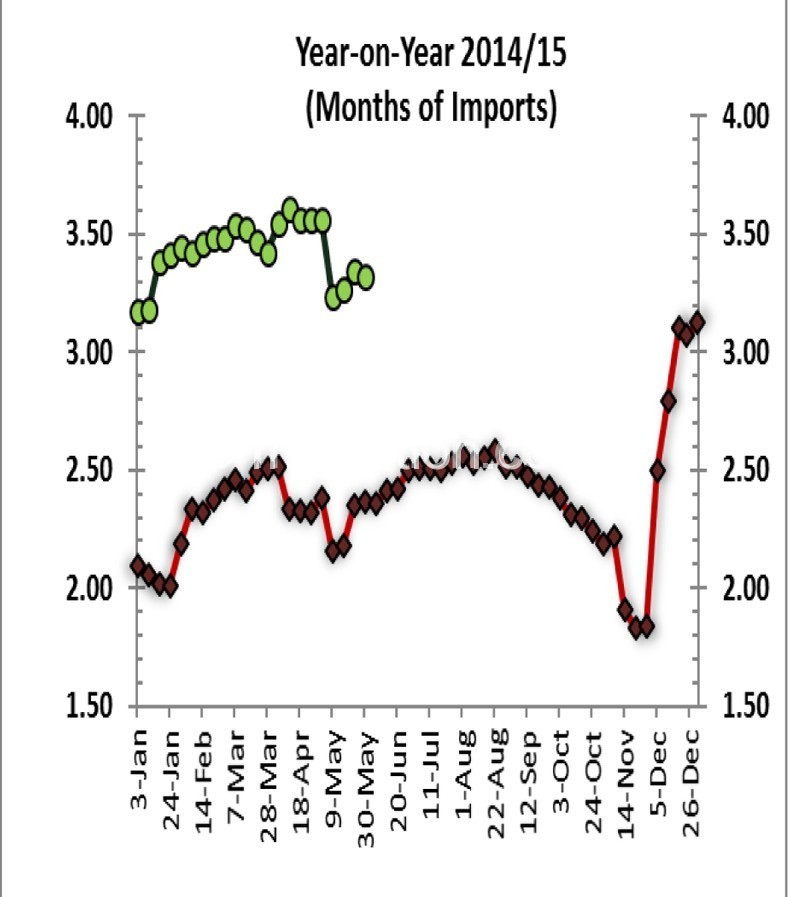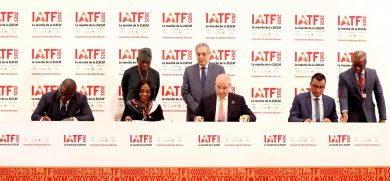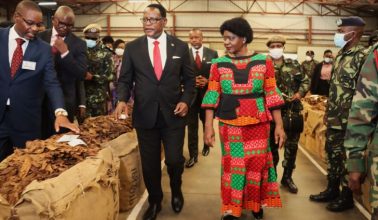Import cover calculating figure rises to $209 million
Malawi’s monthly import cover calculating figure has jumped by 9.4 percent to $209 million from $191 million, the Reserve Bank of Malawi (RBM) has confirmed, reflecting the country’s huge appetite for imports.
This, according to an analyst, could have been caused by the availability of foreign exchange, which has pushed the import cover—the number of months of imports that could be paid for by a country’s international reserves—to above the internationally recommended three months threshold over the past months, signifying a measure of adequacy to hedge against a crisis.
In economics, one common rule of thumb is that foreign exchange reserves that can cover three months’ worth of imports, now about $627 million in Malawi, are adequate.
Since mid-December 2014, the import cover has been above three months thanks to a currency swap with PTA Bank, which resulted in Malawi’s three-year treasury note being bought at $250 million, enabling the country to build foreign exchange reserves to counter exchange rate volatility during the lean period.
RBM spokesperson Mbane Ngwira told Business News yesterday that on the surface, it may mean that Malawians are importing more than they are exporting, but added there is need for more analysis on the matter.
“This could mean that as a country, we are not producing a wide range of products that could bring in more foreign exchange. This could also be a result of increases in prices on the international market,” he said.
“It may also mean that our currency [Malawi kwacha] is overvalued, which makes it cheaper to import than produce.”
The figure, according to RBM, is revised either way every year after the central bank has finished compiling balance of payments (BoP) and national accounts figures, exercises concluded in March 2015.
Data show that the country’s gross official reserves, held in the custody of RBM to cushion the local unit, as at end of May 2015, stood at $694.39 million, 3.32 months of import cover, whereas the private sector reserves, held by commercial banks, were at $290.31 million or 1.38 months of import cover.
University of Malawi’s Chancellor College economics professor Ben Kaluwa yesterday said much as the upward revision of import cover calculating figure could be in view of inflationary effects on the global market, the country’s insatiable appetite for imports is to blame.
“Perhaps the US dollar inflation may have gone up coupled with the global inflation. It could also mean that the import bill is increasing at a faster rate in view of the availability of the foreign exchange, but this is a cause for concern because the country is not doing well on exports,” he said.
Malawi, an agro-based economy, has a concentrated export base, which relies on few export commodities such as tobacco, tea, sugar, coffee, groundnuts, among others to boost its import cover.
Adding on to that, the country’s export generation is seasonal and follows the pattern of the farming cycle, which means during the off-season, the value of the kwacha tends to be under pressure due to heightened demand against supply.





